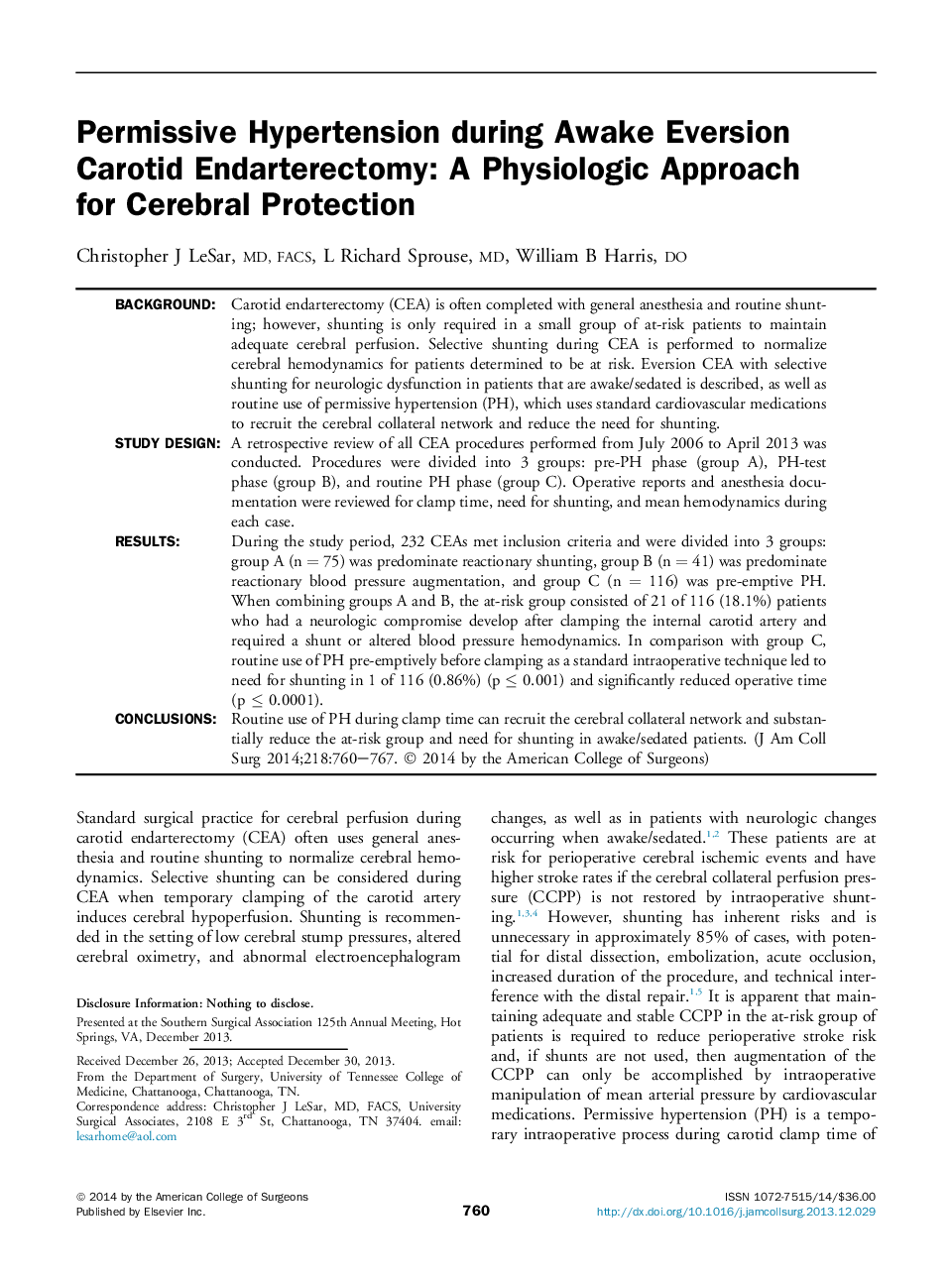| کد مقاله | کد نشریه | سال انتشار | مقاله انگلیسی | نسخه تمام متن |
|---|---|---|---|---|
| 4292191 | 1612235 | 2014 | 7 صفحه PDF | دانلود رایگان |
BackgroundCarotid endarterectomy (CEA) is often completed with general anesthesia and routine shunting; however, shunting is only required in a small group of at-risk patients to maintain adequate cerebral perfusion. Selective shunting during CEA is performed to normalize cerebral hemodynamics for patients determined to be at risk. Eversion CEA with selective shunting for neurologic dysfunction in patients that are awake/sedated is described, as well as routine use of permissive hypertension (PH), which uses standard cardiovascular medications to recruit the cerebral collateral network and reduce the need for shunting.Study DesignA retrospective review of all CEA procedures performed from July 2006 to April 2013 was conducted. Procedures were divided into 3 groups: pre-PH phase (group A), PH-test phase (group B), and routine PH phase (group C). Operative reports and anesthesia documentation were reviewed for clamp time, need for shunting, and mean hemodynamics during each case.ResultsDuring the study period, 232 CEAs met inclusion criteria and were divided into 3 groups: group A (n = 75) was predominate reactionary shunting, group B (n = 41) was predominate reactionary blood pressure augmentation, and group C (n = 116) was pre-emptive PH. When combining groups A and B, the at-risk group consisted of 21 of 116 (18.1%) patients who had a neurologic compromise develop after clamping the internal carotid artery and required a shunt or altered blood pressure hemodynamics. In comparison with group C, routine use of PH pre-emptively before clamping as a standard intraoperative technique led to need for shunting in 1 of 116 (0.86%) (p ≤ 0.001) and significantly reduced operative time (p ≤ 0.0001).ConclusionsRoutine use of PH during clamp time can recruit the cerebral collateral network and substantially reduce the at-risk group and need for shunting in awake/sedated patients.
Journal: Journal of the American College of Surgeons - Volume 218, Issue 4, April 2014, Pages 760–766
